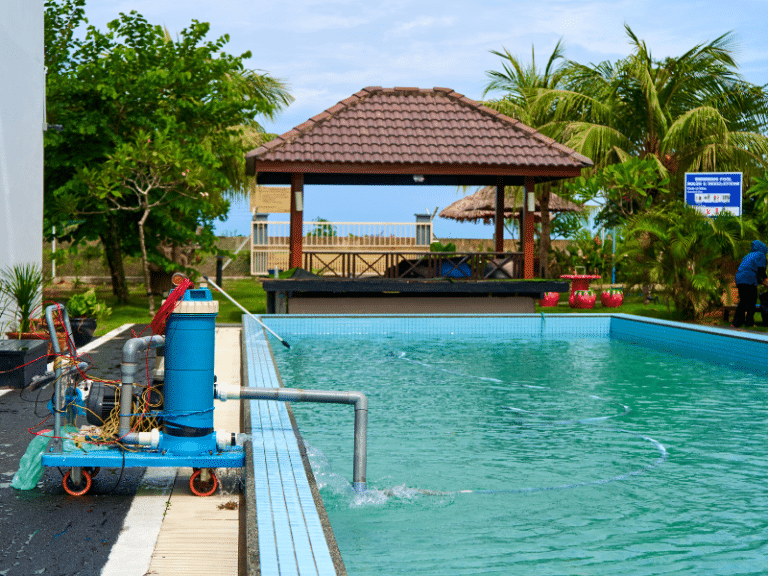When it comes to maintaining a clean and sparkling swimming pool, the type of pool filter you have plays a critical role. There are various types of pool filters available, each with its unique features and maintenance requirements. In this blog, we’ll explore the types of pool filters commonly used and provide essential maintenance and repair tips to keep your pool water pristine and your filter system running smoothly.
Understanding the Types of Pool Filters
Sand Filters
Sand filters are among the most popular choices for pool owners. They operate by passing water through a bed of fine sand, trapping debris and impurities. Regular maintenance is crucial to keep them in top shape.
Maintenance Tip: Backwash your sand filter every few weeks to remove trapped particles. It’s a simple process of reversing the water flow to flush out the debris.
Cartridge Filters
Cartridge filters use pleated fabric cartridges to trap contaminants. These filters provide excellent filtration and are relatively easy to maintain.
Maintenance Tip: Remove and clean the cartridge regularly, typically every 4-6 weeks, or when you notice reduced water flow. Soak the cartridge in a specialized cleaner, rinse, and reinsert.
DE (Diatomaceous Earth) Filters:
DE filters use a fine powder made from crushed diatoms to capture even the tiniest particles. They offer exceptional water clarity but require more involved maintenance.
Maintenance Tip: During the pool season, add DE powder to the skimmer to maintain filtration efficiency. At least once a year, disassemble the filter and clean the grids or fingers.
Maintaining Your Pool Filter System
Now that you know about the different types of pool filters, it’s crucial to understand how to maintain them effectively. Proper maintenance ensures your pool stays clean and safe. Here are some general maintenance tips for all types of pool filters:
Regular Cleaning: Whether you have a sand, cartridge, or DE filter, regular cleaning is essential. Remove debris from the pool skimmer and empty the pump basket. This reduces the strain on your filter and prolongs its life.
Monitor Pressure: Keep an eye on the filter pressure gauge. A sudden increase in pressure indicates a clogged filter. Backwash or clean the filter as needed to maintain proper water circulation.
Chemical Balance: Maintaining the right chemical balance in your pool water is crucial. Properly balanced water reduces the strain on your filter and extends its lifespan.
Winterization: If you live in an area with cold winters, it’s essential to properly winterize your pool filter system. This prevents damage from freezing temperatures.
Types of Pool Filter Repair
Despite proper maintenance, pool filters can develop problems over time. Here are some common issues and repair tips for each type:
Sand Filter Issues:
- Leaking Valve: Replace worn gaskets or seals.
- Cracked Tank: A cracked tank is a significant issue and often requires replacing the entire filter.
- Channeling Sand: To fix channeling, replace the sand with fresh media and ensure the laterals are in good condition.
Cartridge Filter Issues:
- Torn Cartridge: If the cartridge is damaged, replace it with a new one.
- Leaking O-Ring: A leaking O-ring can be fixed by applying a silicone-based lubricant or replacing the O-ring.
- Cracked Housing: In the case of cracked housing, it’s often best to replace the entire filter.
DE Filter Issues:
- Torn Grids or Fingers: Inspect grids or fingers for tears and replace damaged ones.
- DE Cake Issues: If DE cake formation is inconsistent, make sure to add the correct amount of DE powder during maintenance.
Seasonal Maintenance Schedule
To keep your pool filter system in excellent condition, it’s helpful to follow a seasonal maintenance schedule:
Spring:
- Clean and inspect your filter system.
- Check for any winter damage.
- Test and balance pool water chemistry.
Summer:
- Regularly clean skimmer baskets and pump baskets.
- Monitor filter pressure and backwash or clean the filter when necessary.
- Keep an eye on water chemistry and balance.
Fall:
- Continue regular cleaning and maintenance.
- Prepare for winterization if necessary.
- Inspect your filter system for any potential issues.
Winter:
- Winterize your pool filter system by removing and storing sensitive components in a frost-free area.
- Cover the pool and protect it from debris.
- Continue to monitor the pool periodically for any issues.
Conclusion
In summary, understanding the types of pool filters and following a proper maintenance and repair routine is crucial for the health and longevity of your swimming pool. Whether you have a sand filter, cartridge filter, or DE filter, regular care and attention will ensure your pool remains a source of enjoyment for years to come. Keep in mind that timely repairs and maintenance can save you both time and money in the long run.
If you’re in need of pool filter installation, repairs, or guidance on the ideal filter for your pool, don’t hesitate to contact our team. We’re here to assist you with expertise and tailored solutions.

